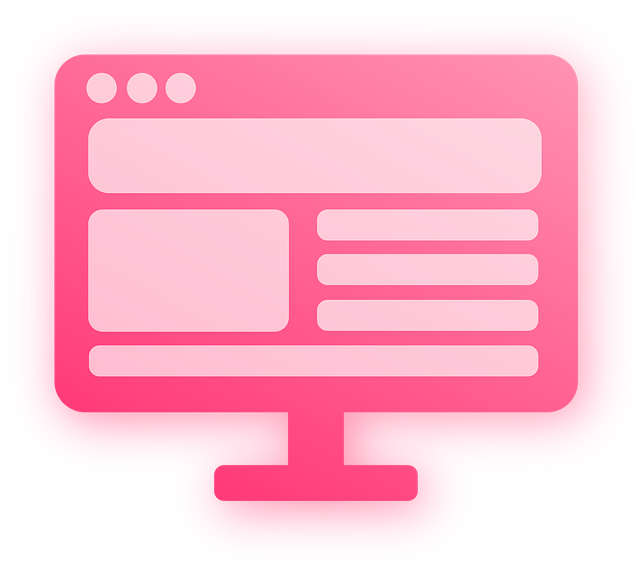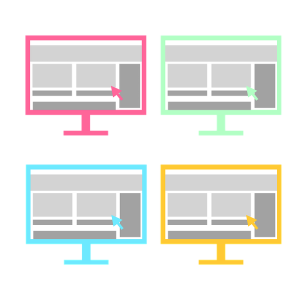
Exploring UX Icons: A Comprehensive Collection for Seamless User Experience
In the digital landscape, user experience (UX) is paramount. It’s the difference between a seamless interaction and a frustrating one. One aspect that significantly contributes to UX is the effective use of icons. In this article, we’ll delve into the world of UX icons collections, exploring their importance, variety, and impact on user interaction.
Table of Contents
| Sr# | Headings |
|---|---|
| 1 | Understanding UX Icons |
| 2 | Importance of Icons |
| 3 | Types of UX Icons |
| 4 | Design Principles |
| 5 | Icon Implementation |
| 6 | Accessibility Considerations |
| 7 | Trends in Iconography |
| 8 | Icon Libraries |
| 9 | Using Icons Wisely |
| 10 | Future of UX Icons |
| 11 | Conclusion |
| 12 | FAQs |
Understanding UX Icons
Icons are graphical representations used to convey concepts, actions, and ideas within digital interfaces. They serve as visual cues that aid users in navigation, comprehension, and interaction. From simple arrows to complex symbols, icons play a pivotal role in enhancing user experience.
Importance of Icons
Icons transcend language barriers, making them universally understandable. They offer a quick way to communicate information, reducing cognitive load and streamlining user interaction. In today’s fast-paced digital environment, where attention spans are short, icons serve as visual shortcuts, guiding users through interfaces effortlessly.
Types of UX Icons
UX icons come in various forms, including navigation icons, action icons, status icons, and decorative icons. Navigation icons, such as menus and arrows, help users move through interfaces. Action icons, like buttons and checkboxes, prompt specific user actions. Status icons indicate the state of a system or process, while decorative icons add aesthetic appeal without functional significance.
Design Principles
Effective icon design adheres to principles of clarity, consistency, and relevance. Icons should be intuitive, recognizable at a glance, and consistent with the overall design language. They should also scale gracefully across different devices and screen sizes, maintaining clarity and legibility.

Icon Implementation
When implementing icons, consider factors such as size, color, and context. Opt for simple, minimalist designs that convey meaning efficiently. Ensure adequate spacing around icons to prevent clutter and confusion. Additionally, leverage color psychology to evoke desired emotions and associations.
Accessibility Considerations
Accessibility is a crucial aspect of UX design. When using icons, provide alternative text descriptions for screen readers and ensure sufficient color contrast for users with visual impairments. Utilize semantic HTML and ARIA roles to enhance accessibility and ensure inclusivity.
Trends in Iconography
Iconography is constantly evolving, reflecting changing design trends and user preferences. From flat design to skeuomorphism, icons evolve to align with contemporary aesthetics and technological advancements. Stay abreast of emerging trends to keep interfaces fresh and engaging.
Icon Libraries
Numerous icon libraries offer a vast array of pre-designed icons for various purposes. From Font Awesome to Material Design Icons, these libraries provide designers with a treasure trove of readily available assets. Explore different libraries to find icons that align with your project requirements.
Also, check the Windows 11 Folder icons collection and Windows 11 Folder icons pack.
Using Icons Wisely
While icons offer numerous benefits, they should be used judiciously. Avoid icon overload, where an excessive number of icons overwhelms users. Prioritize clarity and functionality, opting for icons that enhance usability rather than detract from it.
Future of UX Icons
As technology continues to advance, the role of icons in UX design will evolve. From animated icons to interactive elements, the future promises exciting possibilities. Embrace innovation while staying true to core principles of usability and user-centered design.
Conclusion
In conclusion, UX icons collections play a pivotal role in shaping user experiences across digital platforms. By understanding their importance, embracing design principles, and staying abreast of trends, designers can create compelling interfaces that resonate with users.
FAQs
What are UX icons, and why are they important?
UX icons are graphical representations used in digital interfaces to convey concepts and actions. They are important because they enhance usability, streamline navigation, and communicate information effectively.
How should I choose icons for my project?
When choosing icons, prioritize clarity, relevance, and consistency with your design language. Consider the context of use and opt for icons that align with user expectations and preferences.
Are there any accessibility considerations when using icons?
Yes, accessibility is crucial in icon design. Provide alternative text descriptions, ensure sufficient color contrast, and utilize semantic HTML to enhance accessibility for all users.
Where can I find icon libraries for my design projects?
There are several icon libraries available online, including Font Awesome, Material Design Icons, and Flaticon. Explore these libraries to find icons that suit your project requirements.
What does the future hold for UX icons?
The future of UX icons is dynamic and innovative. Expect to see advancements in animated icons, interactive elements, and personalized iconography as technology evolves and user expectations change.
Enhancing user experience through effective iconography is not just about aesthetics; it’s about creating intuitive, meaningful interactions that resonate with users on a profound level. By embracing the principles and practices outlined in this article, designers can elevate their craft and shape compelling digital experiences for the general public.

Exploring Advanced Iconography Techniques
In the ever-evolving landscape of digital design, the quest for innovative and effective iconography techniques continues. As technology progresses and user expectations evolve, designers are constantly exploring new avenues to push the boundaries of icon design. Let’s delve deeper into some advanced techniques and trends shaping the future of iconography.
Microinteractions and Animated Icons
Microinteractions refer to subtle animations or responses triggered by user actions within an interface. Animated icons harness the power of microinteractions to create dynamic, engaging user experiences. From simple hover effects to intricate loading animations, animated icons add personality and interactivity to interfaces. By leveraging motion and timing, designers can guide user attention, provide feedback, and enhance usability.
Adaptive and Contextual Icons
In an era of responsive design and personalized experiences, adaptive and contextual icons are gaining prominence. Adaptive icons dynamically adjust their appearance based on factors such as device type, screen size, and user preferences. Contextual icons adapt to the context of use, presenting relevant options and actions based on user interactions and system states. By embracing adaptability and context-sensitivity, designers can tailor iconography to suit diverse user needs and scenarios.
Interactive Iconography
Interactive iconography goes beyond static representations, allowing users to engage with icons in meaningful ways. From draggable sliders to interactive toggles, interactive icons enable direct manipulation and customization within interfaces. By empowering users to interact with icons, designers foster a sense of agency and control, fostering deeper engagement and exploration.
Personalized and Dynamic Icon Sets
Personalization is a key driver of user engagement and satisfaction. Dynamic icon sets enable users to customize their interface experience by choosing from a range of icon styles, colors, and themes. By offering flexibility and choice, designers cater to diverse preferences and empower users to personalize their digital environments. Dynamic icon sets also facilitate branding and visual identity, allowing organizations to maintain consistency while accommodating individual preferences.
Haptic and Multisensory Iconography
As technology advances, the potential for multisensory experiences in digital design grows exponentially. Haptic feedback, in particular, offers tactile cues and sensations that enhance user immersion and interaction. Haptic icons leverage touch feedback to provide subtle tactile cues, reinforcing user actions and feedback loops. By integrating haptic elements into iconography, designers create rich, multisensory experiences that resonate with users on a visceral level.
Augmented Reality (AR) and Immersive Icons
The rise of augmented reality (AR) presents new opportunities for immersive iconography experiences. AR icons blend digital content with real-world environments, offering seamless integration and enhanced contextuality. From virtual guides to interactive overlays, AR icons bridge the gap between physical and digital realms, transforming how users interact with information and interfaces. By harnessing the power of AR technology, designers create immersive iconography experiences that transcend traditional boundaries and captivate users’ imagination.
Ethical and Inclusive Icon Design
Ethical considerations are integral to icon design, ensuring inclusivity, diversity, and social responsibility. Inclusive icon design encompasses representation, accessibility, and cultural sensitivity, ensuring that icons resonate with diverse audiences and reflect the richness of human experience. By embracing ethical principles and inclusive practices, designers foster a sense of belonging and empowerment among users, fostering trust and credibility.
In conclusion, the future of iconography is vibrant and multifaceted, driven by innovation, technology, and user-centric design principles. By embracing advanced techniques and emerging trends, designers can create iconography experiences that delight, inspire, and empower users in the digital age. As we embark on this exciting journey of exploration and discovery, let us continue to push the boundaries of iconography and shape the future of digital interaction.